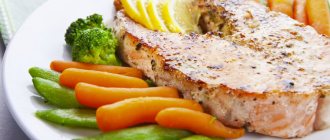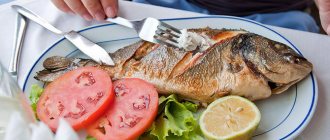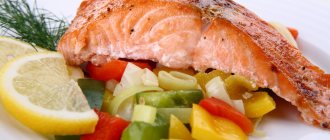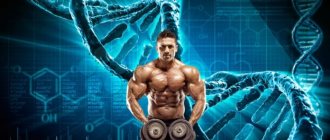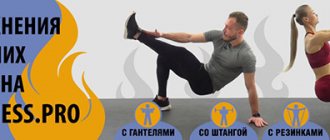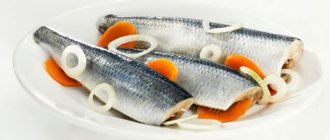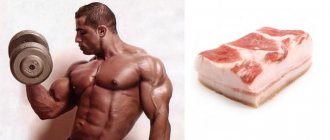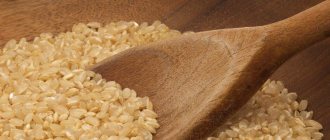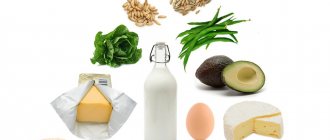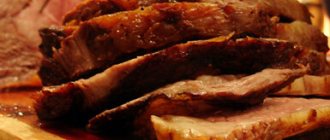Proper nutrition for muscle growth - what is it? Which product is most important and useful for an athlete? Since ancient times, fish has occupied an honorable place in the human nutrition system. Recent studies have shown sensational results. It turns out that fish is a natural anabolic!
By frequently eating fish, not only does muscle growth accelerate and the body receives many nutrients, but sperm production also increases in men. And no abdominal obesity! Matthew Cadet shares useful and interesting information with us. What is nutrition for muscle growth?
Ancient Inuit helped modern bodybuilders
During exploration of Greenland, far beyond the Arctic Circle, a northern people was discovered who called themselves the Inuit. This tribe lived in the eternal snow for centuries. None of them had ever seen vegetables or fruits, much less grain. But to the surprise of the researchers, this small people had excellent health. And the older generation had no signs of heart or joint disease at all. Scientists were amazed to learn that the Inuit ate only fish!
But today, world science trumpets that the only possible way to eat is to eat as varied a meal as possible. No calorie blockers will help. Nutrient macro- and micronutrients can be obtained by maximizing the food basket. Let's put aside the wars of scientific theories today and focus on the question - how can fish help us, athletes and bodybuilders, in building muscle mass?
How to cook fish for an athlete
Fish in bodybuilding is usually prepared very simply.
The best option is boiled, steamed, or baked fish. Fried - a little worse.
You can add spices; combination with slow carbohydrates (rice, buckwheat) and vegetables is recommended.
It is better to use during the day or in the late afternoon. Acceptable - for dinner. Not the best option for breakfast. Can be used as a second breakfast if you practice split meals.
What place do you think fish has in bodybuilding?
What kind of fish do you like? Share your experience and recipes in the comments!
Omega 6
You are probably familiar with the procedure for cooking chicken, beef or pork - first of all, we cut off all excess fat. But with fish everything is exactly the opposite. The more fat it has, the better. But one thing is important - you can’t fry fish! Otherwise, all the beneficial properties disappear as if by magic. And fish oil contains two healthy types of omega 3 fats. These are exactly the same fats that are vital for our body. Fat metabolism is considered normal when the correct proportion occurs with animal omega 6 fats. But only if the proportion is correct. However, this is a theory. What is really happening to us?
Most of us ignore fish altogether. Therefore, almost every second person has a disrupted fat metabolism process. As a result, omega 6 fats, which at first glance are healthy and safe, begin to behave aggressively. Vessels “artificially” narrow due to the deposition of fat on their walls. As a result, the heart begins to convulsively push blood through narrow passages, it becomes overstrained, followed by further troubles, including illness. But sometimes the bloodstream tears fats from the walls, and then they, like a snowball, rush in the blood stream, becoming overgrown with new fat molecules. As a result, a fatty plug forms, which blocks the vessel and completely stops blood flow. The result is known - a grave.
But omega 3 fats are a must for bodybuilders. After all, they eat a lot of meat and dairy products. Otherwise, all athletes are at risk of early heart disease and inevitable disability. According to doctors, the risk of disease increases in direct proportion to the presence of omega 6 fats in the body. Eating fish at least a few times a week significantly balances the presence of omega 6 fats.
Fish is healthier than meat
All the meat you can find in stores is grown in extremely unnatural conditions. Capitalism rules. If the average “piggy” under normal conditions grows in a year, then the “hormonal” one will hit the store within 4 months.
But this makes production cheaper. Grandparents from the village will not be able to compete with large corporations that make the “product” more than 2 times faster. Accordingly, their meat will cost more and will lose in the competition.
And this is almost everywhere. You can only get healthy meat at the market, and even then not everywhere.
With fish things are simpler.
Although here, too, cunning capitalists have found a way to reduce the cost of production in order to feed the whole world and earn money. But the fishing industry is not yet in such decline as the village, so it is easier to find a “natural product” among fish than among meat.
In addition, in terms of the content of vitamins and microelements, fish becomes a more valuable product for a bodybuilder than the chicken breast we are all familiar with.
Omega 3
But what are the benefits of omega 3 fats for sports? It turns out that they activate enzymes that, during active training, “unpack” fat cells, which provides the body with the missing energy. In other words, you lose the fat accumulated under the skin at an accelerated pace. Moreover, omega 3 fats increase the sensitivity of cellular tissue to insulin and act as a natural anabolic, which, as we know, is the main supplier of glucose and nutrients for tissues. Cells absorb more insulin, and therefore protein. There is an increase in the intensity of carbohydrate and protein metabolism. The muscles begin to grow confidently. After training, rapid recovery occurs.
In world sports, omega 3 fats are a well-known medicine against inflammation of joint tissue. After all, athletes overstrain their working ligaments by performing monotonous movements month after month. If a micro-tear occurs, there is a high risk of inflammation. Omega 3 fats are excellent at fighting inflammation. Even bodybuilders are recommended to take these fats during high-intensity training with heavy weights.
Imagine the surprise of doctors when experiments showed that sperm productivity in men increases if fish is present in the diet.
Fish for gaining muscle mass
Working out is extremely important for building a beautiful body and gaining muscle mass. But the second pillar of any fitness and sport is proper (that is, complete and balanced) nutrition. And in nutrition, a special role is played by the competent selection of products according to their components - first of all, according to BZHU (proteins-fats-carbohydrates). And fish, which many of us neglect, considering it some kind of uninteresting product (such as “cat food”), or, on the contrary, too pretentious (“shark fin soup”), is in fact an extremely useful product, especially for those engaged in sports or fitness.
What makes fish exceptionally healthy?
Medical recommendation
Some skeptics immediately said that it is really necessary to eat fish, if today you can buy fish oil in capsules. But we dare to assure you that you will lose a lot by choosing this path. Firstly, fish is extremely nutritious and quickly digestible. No chicken or beef can compare with fish. Therefore, fish is one of the best sources of protein, both before and after training. Plus vitamins. The body needs specific amino acids to help it recover from exercise. Fish protein simply contains them in abundance. Fish is also rich in selenium, a trace element that helps maintain prostate health. It stimulates the release of thyroid hormones. Fish is simply a must for those who have been bodybuilding for more than 20 years. Fish is also needed by people who have undergone surgery to remove their tonsils. It is known that such an operation entails suppression of the thyroid gland. There is a reduction in secreted hormones and a decline in protein synthesis in the body. Which will lead to a slowdown in the growth of muscle tissue.
Those who have been taking steroids for a long time should be prepared for a drop in their “own” testosterone. Athletes begin to take zinc in capsules, which, unfortunately, is poorly absorbed. But zinc from fish is absorbed just fine.
What kind of fish should an athlete eat?
First of all, you need to decide on the source of origin of the fish.
Where was she caught?
Or was it raised using not the most healthy food supply?
Perhaps some thrifty Chinese grew it in their toilet?
I understand that after this thought you may lose your appetite.
But fish in modern conditions is not only beneficial, but also harmful. For example, fish from Crimea or Odessa (almost any “native” region for fish) has all the healing properties of the sea. But often even in coastal regions we find imports, Chinese substitutes.
And here there are already toxins, and all the harm to fish that scientists talk about.
Residents of coastal regions are lucky. You can easily find fresh and healthy fish there.
Fish in bodybuilding are conventionally divided into 2 types:
The division is extremely arbitrary, since many varieties of fish contain both proteins and fats.
The bottom line is that both types should be present in the diet. Among the representatives of “fatty” fish, one can distinguish expensive salmon, and cheap sprat and sprat.
The best protein option is pollock. Plus, it's very cheap.
But the more varied your diet, the better. Here you can also rely on taste and financial capabilities. Different fish have different amino acid profiles that are needed for muscle growth.
Combination with other products and different cooking methods will also work to your advantage.
Attention!
Humanity manages to ruin everything it touches. Today, sea waters are contaminated with heavy metals such as lead and mercury. Therefore, eating fish from such waters can cause poisoning. Therefore, scientists strongly do not recommend eating large fish. Such fish live long and their meat is literally saturated with heavy metals. The most harmful are shark, swordfish, albacore tuna and king mackerel.
The American Dietetic Association stated that in our time, consuming no more than 400 grams of fish per week can be “safe”. Children - half as much, and pregnant women should completely exclude fish from their diet.
Athletes love tuna very much. But don’t even think about buying a jar that says “albacore tuna”! This fish can “feed” heavy metals so that you will restore your health for many years. But small types of tuna are much safer to eat.
The ideal choice for the modern athlete is salmon. It is high in protein and omega 3 fats.
Nutrient table
What did you eat before? Sprats and herring? Finally put an end to your denseness! And we will present to your attention a list that represents a whole pantheon of fish. You can choose what suits you - depending on your tastes and your geographical location. So, proper nutrition for muscle growth:
- Atlantic mackerel contains 342 calories, 44 g protein, 20 g fat and 4.4 g omega 3 fats.
- Herring contains 346 calories, 40 grams of protein, 20 grams of fat and 3.6 grams of omega 3 fats.
- Atlantic salmon contains 350 calories, 38 grams of protein, 22 grams of fat and 3.4 grams of omega 3 fats.
- Chinook salmon contains 392 calories, 44 grams of protein, 22 grams of fat and 3 grams of omega 3 fats.
- Salmon juice contains 368 calories, 46 g protein, 18 g fat, 2.4 g omega 3 fats.
- Canned salmon contains 232 calories, 40 grams of protein, 8 grams of fat and 2 grams of omega 3 fats.
- Sardines contain 354 calories, 42 grams of protein, 20 grams of fat and 2 grams of omega 3 fats.
- Shark contains 260 calories, 42 grams of protein, 10 grams of fat and 1.8 grams of omega 3 fats.
- Flounder contains 324 calories, 46 grams of protein, 14 grams of fat and 1.6 grams of omega 3 fats.
- Canned white tuna contains 218 calories, 40 grams of protein, 6 grams of fat and 1.4 grams of omega 3 fats.
- Swordfish contains 264 calories, 44 grams of protein, 8 grams of fat and 1.4 grams of omega 3 fats.
- Seabass contains 210 calories, 40g protein, 4g fat and 1.4g omega 3 fat.
- Halibut contains 238 calories, 46 grams of protein, 6 grams of fat and 1 gram of omega 3 fat.
- Crabs contain 174 calories, 34 g protein, 4 g fat and 1 g omega 3 fat.
- Lobsters contain 244 calories, 44 grams of protein, 4 grams of fat and 1 gram of omega 3 fat.
- Tuna contains 244 calories, 52 grams of protein, 2 grams of fat and 0.8 grams of omega 3 fats.
- Oysters contain 278 calories, 32 grams of protein, 8 grams of fat and 0.8 grams of omega 3 fats.
- Canned light tuna contains 198 calories, 44 g protein, 2 g fat, 0.6 g omega 3 fat.
- Shrimp contain 168 calories, 36 g protein, 2 g fat and 0.6 g omega 3 fat.
- Haddock contains 190 calories, 42 g protein, 1.6 g fat and 0.4 g omega 3 fat.
- Catfish contains 258 calories, 32 g protein, 14 g fat and 0.4 g omega 3 fat.
- Tilapia contains 218 calories, 44 grams of protein, 4 grams of fat and 0.4 grams of omega 3 fats.
- Cod contains 178 calories, 38 grams of protein, 2 grams of fat and 0.2 grams of omega 3 fat.
- Mahi Mahi contains 186 calories, 40 grams of protein, 2 grams of fat and 0.2 grams of omega 3 fats.
We present to your attention several recipes for not only tasty, but also healthy fish dishes for athletes.
Roast fish
For 4 servings: 2 tablespoons olive oil, 2 grated garlic cloves, 1/2 onion, 1 chopped carrot, 1/2 tablespoon ground black pepper, 4 tomatoes cut into pieces and 400 g fish fillet (cod, flounder or peksha).
Heat the oil in a deep, thick saucepan, add the onion and garlic and cook until the ingredients soften. Then add the tomato pieces and carrots. Sprinkle it all with pepper and bring to a boil. Then reduce the heat and simmer for 5 minutes. Add fish fillet pieces to the pan and cook for 7-10 minutes.
- 1 serving of this dish contains 175 calories, 30 g of protein, 6 g of carbohydrates and 3 g of fat.
Grilled salmon
Makes 2 servings: 1 cup plain yogurt, 2 tablespoons chopped coriander (or other seasoning to taste), 2 minced garlic cloves, 2 tablespoons crushed mint, 1/2 teaspoon ground black pepper and 2 pieces of salmon (each approx. 180 g each).
In a deep bowl, mix yogurt, chopped coriander, garlic, crushed mint and pepper. Partially pour the resulting liquid mass back into another cup (1/4 volume). Place salmon pieces into the resulting mixture, cover with a lid and refrigerate for 15 minutes. Then place the salmon on the grill and cook for 7-10 minutes. The fish only needs to be turned over once! Pour the remaining mixture over the cooked fish.
- 1 serving of this dish contains 336 calories, 36 g of protein, 4 g of carbohydrates and 20 g of fat.
Grilled cod
For 2 servings: 1/2 cup lemon juice, 1/2 cup zest, 2 tablespoons mustard, 1 tablespoon dry herb to taste, 1/4 spoon black pepper, 2 tablespoons olive oil, 2 pieces halibut fillet 180 g each.
Combine lemon juice, zest, mustard, seasoning and black pepper in a deep bowl. Pour in olive oil. After mixing the resulting mass, place the fish fillet in a bowl and turn over several times. Place the dish in the refrigerator for half an hour. Preheat the oven and place the fish pieces on a baking sheet. Cook the top and bottom sides for 5-7 minutes.
- 1 serving of this dish contains 269 calories, 33 g of protein, 47 carbohydrates and 10 g of fat.
High protein content
Fish actually contains from 7 to 23% protein, on average 15-22%. The champions in protein content are such fish species as tuna (22.7%), chum salmon (22%), pink salmon (21%), salmon (20%), and small saury (20%). Even fish such as halibut, burbot, pike perch, perch, carp, whitefish, mackerel, horse mackerel contain 18-19% protein. As we know, protein is extremely important for muscle growth. Not only will its deficiency cause the body to simply lack the building material to create muscles, but amino acids (especially BCAA) inhibit catabolism after training and speed up recovery. Therefore, the amount of protein in the diet for anyone who wants to build muscle should be about 2 g per kilogram of body weight, and about 25-30% of the daily caloric intake.
Fish protein is of very high quality in amino acid composition - it almost exactly corresponds to the “ideal” protein (only it contains less histidine). Therefore, it can more than replace meat and eggs in the diet.
Baked perch
- 26Kcal
- 0.7 proteins, g
- fat, gr
- 5.9 carbohydrates, g
- 34.9Kcal
- 0.8 proteins, g
- 0.2 fat, g
- 8.2 carbohydrates, g
- 310Kcal
- 56.8 proteins, g
- 7.5 fat, g
- carbohydrates, g
Baked perch
- 370.9Kcal
- 58.3 proteins, g
- 7.7 fat, g
- 14.1 carbohydrates, g
Onions and carrots should be finely chopped and placed on foil. Place perch fillet on top, add salt and sprinkle with lemon juice if desired. Some people also add dried herbs. After this, the fish goes into the oven and remains there until fully cooked.
As you have already seen, fish is an integral part of a bodybuilder’s diet. It is this that allows you to get a beautiful figure and build muscle in the shortest possible time. And if you haven’t started eating seafood yet, it’s time to think about it! Tuna, salmon, dorado and other dietary fish species will allow you to achieve the desired effect in the shortest possible time.
